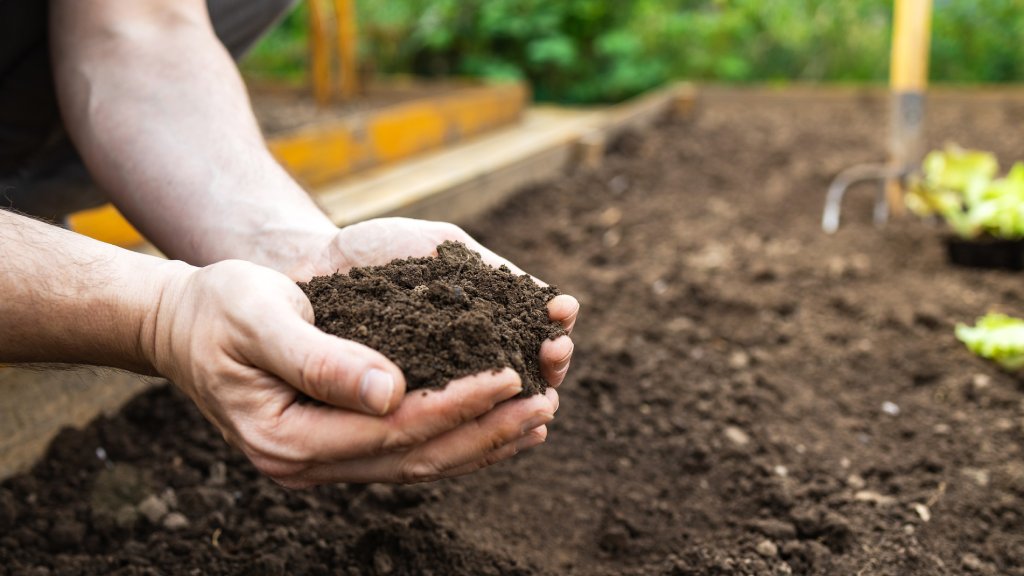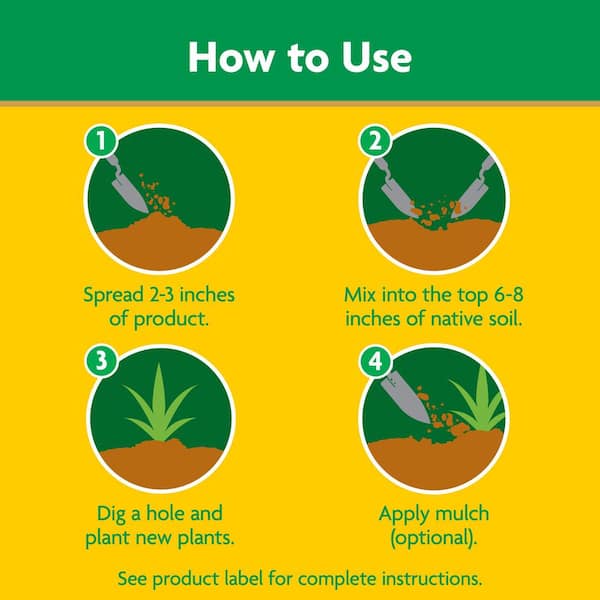Are you ready to transform your garden into a thriving, green paradise? Understanding how to use garden soil correctly is the key to making your plants grow healthy and strong.
The right soil can boost your garden’s growth, improve plant health, and save you time and effort. You’ll discover simple, how to use garden soil practical tips to get the most out of your garden soil. Keep reading—you’re just a few steps away from unlocking the secret to a flourishing garden!
Choosing The Right Soil
Choosing the right soil is key to a healthy garden. Good soil helps plants grow strong and resist disease. It also holds water and nutrients well. Knowing about soil types, pH, and nutrients helps you pick the best soil. Testing soil gives you a clear picture of what your garden needs.
Types Of Garden Soil
There are several types of garden soil. Sandy soil drains quickly but holds fewer nutrients. Clay soil holds water well but can be heavy and hard to work. Loamy soil is a mix of sand, clay, and silt. It drains well and keeps nutrients, making it ideal for most plants. Choose soil based on what plants you want to grow and your garden’s natural soil.
Soil Ph And Nutrient Content
Soil pH shows how acidic or alkaline your soil is. Most plants grow best in soil with a pH between 6 and 7. Soil that is too acidic or alkaline can block nutrient uptake. Nutrients like nitrogen, phosphorus, and potassium are vital for plants. Soil with low nutrients will need fertilizing. Knowing pH and nutrient levels helps you adjust soil for healthy growth.
Testing Your Soil
Testing soil is easy and affordable. You can buy test kits online or at garden stores. Take samples from different parts of your garden. Mix them and follow the test kit instructions. The results show pH and nutrient levels. Use this information to choose the right soil or amendments. Regular testing keeps soil healthy and plants happy.
Preparing Garden Soil
Preparing garden soil is the first step to growing healthy plants. Good soil helps roots grow strong and plants get the nutrients they need. Before planting, the soil must be ready to support new life.
Proper preparation improves soil texture, fertility, and water flow. It also removes obstacles that can stop roots from spreading. Taking time to prepare soil makes gardening easier and more successful.
Clearing And Loosening Soil
Start by removing weeds, rocks, and old plant debris. These can block roots and take nutrients from new plants. Use a garden fork or spade to loosen the soil deeply. This helps air and water reach plant roots better. Avoid compacting the soil by stepping on it.
Adding Organic Matter
Mix in compost, aged manure, or leaf mold to enrich the soil. Organic matter improves soil structure and adds nutrients. It also helps soil hold moisture without becoming soggy. Spread a layer of organic matter over the soil and work it in well.
Improving Drainage
Check if water stays on the soil surface after rain. Poor drainage can drown roots and cause plant diseases. Add coarse sand or fine gravel to heavy clay soils. Raised beds also help water drain away from roots. Good drainage keeps plants healthy and strong.
Planting Techniques
Planting techniques play a key role in using garden soil effectively. They help plants grow strong and healthy. Proper planting ensures roots get enough air, water, and nutrients. This section covers simple tips to improve your planting skills.
Planting Depth And Spacing
Plant seeds or seedlings at the right depth. Too deep, roots may struggle to reach the surface. Too shallow, plants can dry out quickly. Follow the seed packet or plant tag instructions carefully.
Space plants correctly. Crowded plants compete for sunlight and water. Give each plant enough room to grow and spread. Proper spacing helps air flow and reduces disease risk.
Using Mulch To Retain Moisture
Mulch helps keep soil moist longer. It reduces evaporation and keeps soil temperature steady. Spread a 2-3 inch layer of organic mulch, like straw or wood chips, around plants.
Mulch also blocks weeds. Weeds steal water and nutrients. Using mulch saves time and keeps plants healthy.
Watering Tips For Soil Health
Water plants deeply and less often. Shallow watering causes weak roots. Deep watering encourages roots to grow deep into the soil.
Water in the morning to reduce evaporation. Avoid watering leaves to prevent diseases. Keep soil moist but not soggy. Good watering supports healthy soil life and strong plants.

Credit: www.gardeningknowhow.com
Maintaining Soil Fertility
Maintaining soil fertility is key for a healthy garden. Healthy soil helps plants grow strong and produce more. It keeps the soil full of nutrients and alive with helpful organisms. Good practices can keep soil fertile for many seasons.
Fertilizing Strategies
Use fertilizers to add nutrients the soil lacks. Choose balanced fertilizers with nitrogen, phosphorus, and potassium. Apply them in small amounts to avoid harming plants. Organic fertilizers like bone meal or fish emulsion work well too. Fertilize during growing seasons for best results.
Crop Rotation Benefits
Change the plants you grow in each bed every season. Crop rotation stops soil from losing specific nutrients. Different plants use different nutrients and return others to the soil. Rotate heavy feeders with light feeders or legumes. This method reduces pests and diseases as well.
Composting For Nutrients
Compost adds natural nutrients and improves soil texture. Use kitchen scraps, leaves, and garden waste for compost. Break down materials by turning the pile regularly. Add finished compost to your garden soil before planting. Compost feeds soil microbes and helps retain moisture.
Troubleshooting Soil Problems
Soil problems can slow plant growth and reduce garden health. Knowing how to fix these issues helps keep your garden strong. This section covers common soil problems and easy ways to handle them.
Dealing With Soil Compaction
Soil compaction happens when soil gets too hard. Roots cannot grow well in compacted soil. Water and air have trouble reaching plants.
To fix this, loosen the soil by digging or using a garden fork. Avoid walking on garden beds to keep soil soft. Adding organic matter like compost also helps break up hard soil.
Managing Soil Erosion
Soil erosion washes away topsoil with water or wind. This removes nutrients plants need. Erosion can leave bare patches in your garden.
Plant ground covers or mulch to protect soil surface. Create barriers like small walls or rows of plants to slow water flow. These steps keep soil in place and safe.
Addressing Pest And Disease Issues
Soil can hide pests and diseases that harm plants. Some insects live in soil and eat roots. Diseases may spread through infected soil.
Use healthy soil and avoid using the same soil repeatedly. Rotate crops each season to reduce pests. Remove and destroy infected plants quickly to stop spread.

Credit: www.homedepot.com

Credit: www.youtube.com
Frequently Asked Questions
What Is The Best Way To Prepare Garden Soil?
To prepare garden soil, first remove debris and weeds. Then, loosen the soil using a tiller or garden fork. Add compost or organic matter to improve fertility and drainage. Mix well and level the soil before planting your garden.
How Often Should Garden Soil Be Amended?
Garden soil should be amended at least once a year. Ideally, amend soil in early spring before planting. Adding organic matter improves soil structure, nutrient content, and moisture retention. Regular amendments boost plant growth and overall garden health.
Can I Use Garden Soil For Potted Plants?
Garden soil is generally too dense for pots. Use a light, well-draining potting mix instead. Garden soil can cause poor aeration and root rot in containers. For best results, choose soil designed specifically for container gardening.
How To Test Garden Soil Quality At Home?
You can test garden soil quality using a simple soil test kit. These kits measure pH, nutrient levels, and texture. Collect soil samples from different garden spots. Follow kit instructions to analyze soil and adjust amendments accordingly.
Conclusion
Using garden soil correctly helps plants grow strong and healthy. Choose soil that fits your plant’s needs. Keep soil moist but not too wet. Add compost for better nutrients and texture. Regularly check soil quality to keep plants happy. Good soil care makes your garden thrive.
Start with these simple steps for better gardening results. Your plants will thank you with vibrant growth and blooms. Simple actions lead to a beautiful, flourishing garden space.

